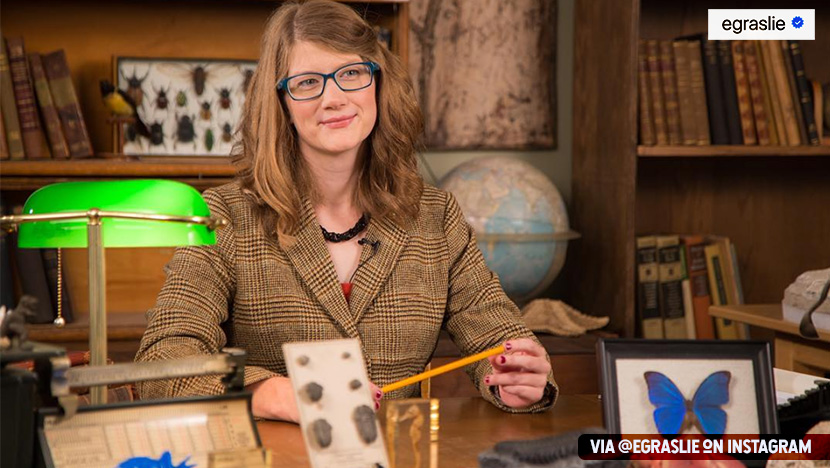The Most Famous Natural History Museums In The USA
It’s no secret that the United States is home to some of the best museums in the world. These museums are filled with incredible exhibits and artifacts that offer insight into our history and world. They are meant to be educational and inspiring, but they have also become tourist attractions. If you can’t afford to visit these top museums, try your luck at the best online casinos that payout usa.
Today’s article will explore some of these famous museums in the United States.
The American Museum of Natural History
Location: New York City, USA
The American Museum of Natural History, one of New York’s great cultural landmarks, is flanked on one side by the tenacious Central Park. Visitors’ scientific curiosity is piqued by the iconic Central Park West entrance hall, which features a bone-crunching conflict between a ferocious Barosaurus mother and an encroaching Allosaurus.

The American Museum of Natural History is the world’s most comprehensive repository of specimens pertaining to the planet’s natural history. It has more than 30 million pieces in its collection. This beautiful Romanesque Revival structure, constructed specifically for this purpose in 1888, only displays the most impressive portions of its contents.
The museum has a maze of displays spread across five levels, making it easy to get lost. Early human remains, enormous old sequoia (redwood) trees, Easter Island stone statues, classic American wildlife, and a Titanosaur cast so long it peeks past the exhibit doorway are displayed in the Museum of Paleontology. The Hayden Planetarium’s incredible shows are definitely worth the price of admission.
Field Museum of Natural History
Location: Chicago, USA
As a pillar of the scientific community, the Field Museum is a beacon of hope for the world’s scientific community with its breathtaking Chicago exhibitions. Originally on display at the World’s Columbian Exposition in 1893, the museum’s collection has grown to 40 million artifacts, and it has remained there by Lake Michigan since 1921.
As part of its permanent collection and event calendar, the Field Museum strives to be innovative and interactive (and fun, of course). Success at the museum may be seen in the work of its YouTube-conquering Chief Curiosity Correspondent, Emily Graslie.

Children and adults alike can participate in a wide range of family-friendly science projects, allowing them to learn about our natural world’s wonders, oddities, and educational worth. Be sure to check the Illinois online casinos when you visit Chicago.
Natural History Museums of Los Angeles County
Location: Los Angeles, USA
As the largest natural history museum in California’s southernmost county, it may not be as well-known as its East Coast counterparts. There are more carats of gold in the Gold Rush display than Aladdin’s cave and Smaug’s hoard combined.
A Plesiosaur and her unborn baby skeletons, the world’s largest Ammonite (enormous), and a chocolate-scented nature garden are among the area’s other hidden treasures. PETA is keeping an eye on things.
The La Brea Tar Pits, a 15-minute drive away in Hancock Park, is what truly sets the museum apart as one of the top natural history museums on the planet. Fossils from the Ice Age are excellently preserved by the bubbling, leaking asphalt beneath the park. Right in the middle of the city of Los Angeles, there is an ongoing archaeological excavation. Since the first excavations began in 1913, there have been several discoveries of mammoths, dire wolves, saber-toothed cats, etc.
Smithsonian National Museum of Natural History
Location: Washington D.C., USA
It’s not a contest, but you can see the Smithsonian National Museum of Natural History’s pride in its collection. It contains 146 million distinct objects.
The Smithsonian is not just the world’s most popular natural history museum. Still, its massive Neoclassical structure also commands attention on the National Mall, a stone’s throw from the White House (don’t get any ideas).
Attractions like Henry, the African Bush Elephant’s habitat in the Rotunda’s ornate archways and pillars, make it an instantly identifiable museum venue worldwide. The Hope Diamond is one of the museum’s most notable art pieces. Few jewels have as extensive and compelling a story as this piercing-blue, purportedly cursed 45-carat diamond.
There appears to be a curse that only affects individuals who possess the diamond rather than those who gaze at it. So it’s a good thing that the rock has attracted over 100 million admiring glances since its inclusion in the Smithsonian Museum’s collection in 1958.
Conclusion
The post covers the best natural museums in the USA. Natural History Museums like the Museum of Natural History in New York and the Smithsonian Institute have many unique exhibits covering a wide range of topics. These museums are constantly working to discover new information about the world around us and help us learn about our connection to it.
































































































